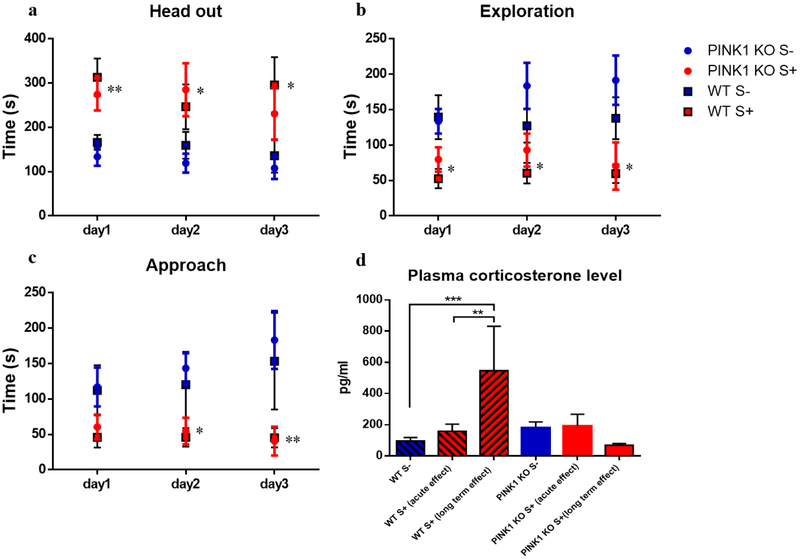Fig 2.
Psychological distress induces anxiety-like behavior in WT and PINK1-KO rats. Corticosterone response is uncoupled in PINK1-KO rats. (a) time spent in head out position (alert behavior), for day1: **p ≤ 0.01, WT S+ compared with WT S- and PINK1-KO S+ compared with PINK1-KO S-; for day2: *p ≤ 0.05, PINK1-KO S+ compared with PINK1-KO S-; for day3: *p ≤ 0.05, WT S+ compared with WT S-; (b) time of exploration in the open part of the light-dark box (exploration), *p ≤ 0.05, WT S+ compared with WT S- and PINK1-KO S+ compared with PINK1-KO S-; and (c) time of examination of the piece of cotton impregnated (or not) with cat urine (approach), *p ≤ 0.05, **p ≤ 0.01, PINK1-KO S+ compared with PINK1-KO S-. n = 10 rats (5 females and 5 males) per group. Data are expressed as mean ± SEM, unpaired t test; (d) plasma corticosterone level in male and female rats, n = 4–10 per group. Data are expressed as mean ± SEM. **p ≤ 0.01, ***p ≤ 0.001.

